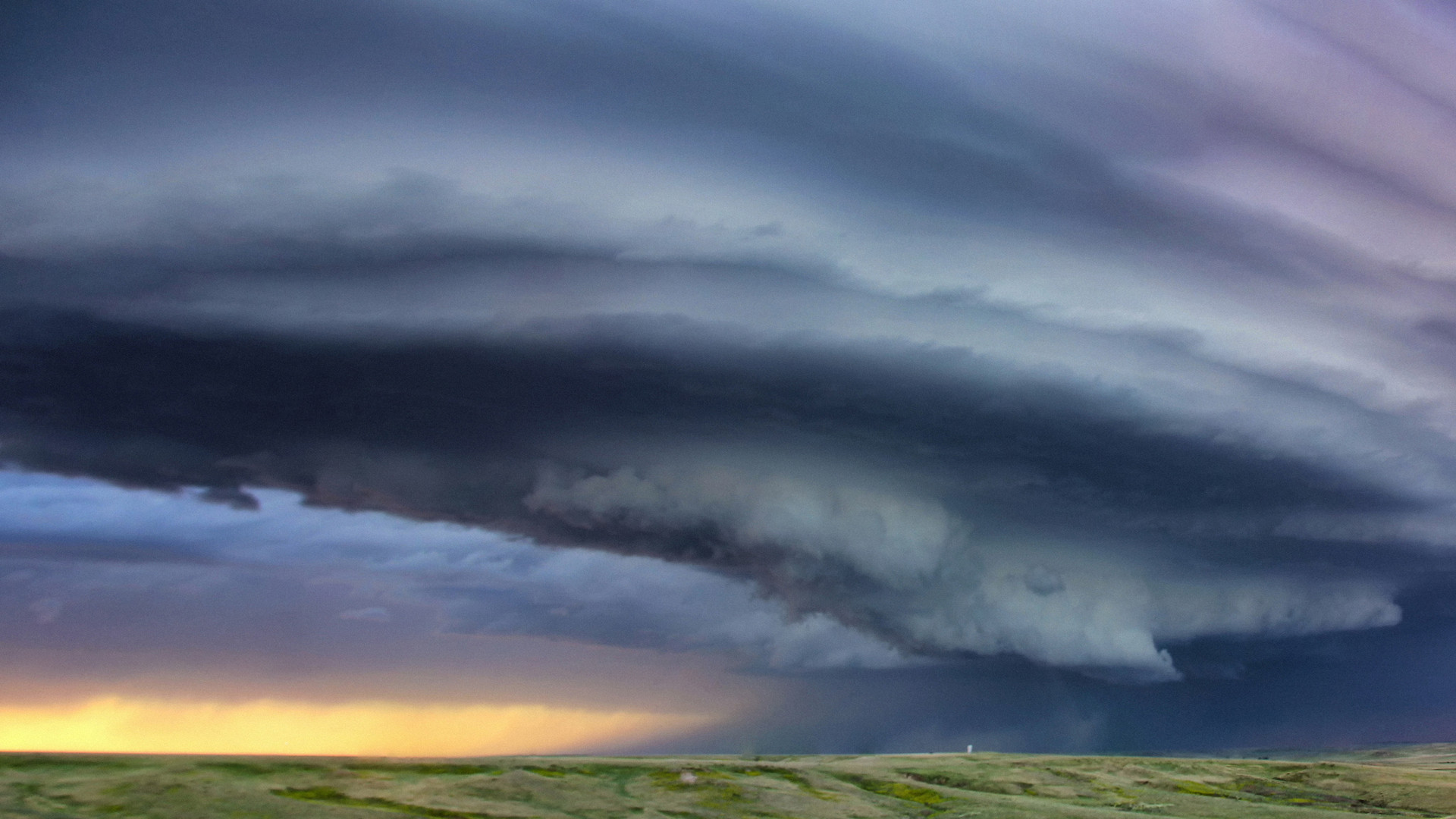本日13時、ミシガン州全体のTornado Drill(避難訓練)が予定されています
![]()
ミシガン州関係各所が実施する避難訓練となりますが、一般市民は本日13時に、ラジオやテレビで竜巻警報(Alert)を確認する形となります
オフィス勤務の方は、会社内で避難訓練を実施する(強制でなく自主的な訓練となります)こともあるかと思いますが、在宅の世帯は万が一のケースに備えて、自宅内でどこに避難できるか、すべきか、を世帯内で確認する良い機会になるかと思います![]()
上記のメディア記事にも記載されていますが、一般的な竜巻の”Lead time”(猶予時間)は、10〜15分とされています。
その時間内に速やかに避難準備をする、という訓練、練習をしておくと良いかと思います![]()
以下メディア記事からの抜粋となりますが、竜巻避難対策情報が記載されていますので、Tornado Stateの州であるミシガン州在住の世帯は是非いま一度、当ブログの過去記事、日本メディア記事も合わせて、内容ご確認ください
![]()
![]() Supercell(スーパーセル)
Supercell(スーパーセル)![]() : A system producing severe thunderstorms, featuring rotating winds sustained by a prolonged updraft that may result in hail or tornadoes.
: A system producing severe thunderstorms, featuring rotating winds sustained by a prolonged updraft that may result in hail or tornadoes.
![]() Enhanced Fujita (EF) Scale(改良藤田スケール:
Enhanced Fujita (EF) Scale(改良藤田スケール:![]() 竜巻の強さを表すスケール): Rates the strength of tornadoes in the United States and Canada. There are six categories for the EF scale and are in order of increasing intensity. *It is based on wind estimates of a 3 second gust.*
竜巻の強さを表すスケール): Rates the strength of tornadoes in the United States and Canada. There are six categories for the EF scale and are in order of increasing intensity. *It is based on wind estimates of a 3 second gust.*
-
EF0: Tornadoes with estimated wind speed of 65-85 mph and leads to light damage.
-
EF1: Estimated wind speed of 86-110 mph with the potential of moderate damage.
-
EF2: Estimated wind speeds of 111-135 mph with significant damage potential.
-
EF3: Estimated wind speeds of 136-165 mph with severe damage potential.
-
EF4: Estimated wind speeds of 166-200 mph with devastating damage potential.
-
EF5: Estimated wind speeds of over 200 mph with incredible damage potential.
![]() Before a Tornado:(竜巻の接近に備えて)
Before a Tornado:(竜巻の接近に備えて)
-
避難場所の確認:Identify safe rooms built to FEMA criteria or ICC500 storm shelters or other potential protective locations in sturdy buildings near your home, work, and other locations you frequent so you have a plan for where you will go quickly for safety when there is a Warning or an approaching tornado.
-
外出時、学校やショッピングモールなどを想定した避難場所の確認:For schools, malls, and other buildings with long-span roofs or open space plans, or many occupants, ask the building manager to identify the best available refuge.
-
緊急避難用キット、家族間緊急連絡方法の確認:Build an emergency kit and make a family communications plan.
-
地元自治体の警報システムへの登録:Sign up for your community’s warning system. The Emergency Alert System (EAS) and National Oceanic and Atmospheric Administration (NOAA) Weather Radio also provide emergency alerts. If your community has sirens, become familiar with the warning tone.
-
緊急速報の確認:Listen to NOAA Weather Radio or to commercial radio or television newscasts for the latest information. Meteorologists can predict when conditions might be right for a tornado. In any emergency, always listen to the instructions given by local emergency management officials.
-
天候の変化に常に注意を払う:Be alert to changing weather conditions. Look for approaching storms.
-
以下の”竜巻”兆候に注意する:Look for the following danger signs:
-
Dark, often greenish sky(暗く、緑がかった空)
-
Large hail(大きいひょう)
-
A large, dark, low-lying cloud (particularly if rotating)(大きく、黒い、低めに広がった雲、特に回転している)
-
Loud roar, similar to a freight train.(大きい、電車が通り過ぎるような轟音)
-
If you see approaching storms or any of the danger signs, be prepared to take shelter immediately.(竜巻そのものが目視できる、また危険な兆候が既に確認できている場合は、ただちに安全な場所に避難する)
-
![]() During a Tornado:(竜巻が既にきている、”タッチダウン”している場合)
During a Tornado:(竜巻が既にきている、”タッチダウン”している場合)
-
If you are under a tornado warning, seek shelter immediately! Most injuries associated with high winds are from flying debris, so remember to protect your head.(Tonardo warning=竜巻警報が発令されている場合は、ただちに避難)
-
If you are in school, nursing home, hospital, factory, shopping center, high-rise building then:(学校、介護施設、病院、工場、ショッピングモール、高層の建屋内の場合)
-
Go to a pre-designated area such as a safe room built to FEMA criteria, basement, storm shelter or the lowest building level. If there is no basement, go to the center of a smaller interior room, such as a closet or hallway, that is away from corners, windows, doors and outside walls. Put as many walls as possible between you and the outside. Get under a sturdy table and cover your head and neck with your arms and cover your body as best you can e.g., with a heavy coat or blankets, pillows.(施設内で推奨されている低層または地下のスペースに避難、地下室がない場合は低層の小さい部屋、スペースに避難、できる限りの壁を外部に対してブロックして準備、頑丈なテーブルの下に頭部をカバーして姿勢を低くして避難、カバーする服、ブランケット、クッションなどで防護すればなお良い)
-
In a high-rise building, go to a small interior room or hallway on the lowest floor possible.(高層建屋内では、できる限り小さい部屋、廊下、低層階に避難する)
-
Do not open windows.(窓を絶対に開けない、閉める)
-
![]() After a Tornado:(竜巻が去った後)
After a Tornado:(竜巻が去った後)
-
If you are trapped, do not move about or kick up dust. If possible, cover your mouth with a cloth or mask to avoid breathing dust. Try to send a text, bang on a pipe or wall, or use a whistle instead of shouting.(避難場所内で身動きがとれない場合、脱出する際には口をカバーするか、マスクをして埃や粉塵を吸い込まないよう注意。助けを求める場合は、携帯メッセージ、またはパイプなどで壁を叩く、叫ぶよりも笛などがあればなお良い)
-
Keep listening to EAS, NOAA Weather Radio, and local authorities for updated information.(ラジオなどで最新情報を確認)
-
Save your phone calls for emergencies. Phone systems are often down or busy after a disaster. Use text messaging or social media to communicate with family and friends.(緊急時に備えて携帯通話は控えておく。災害直後は電話回線がダウンするケースが多いため、通話よりテキストメッセージやSNSの利用が連絡方法としては適している)
-
Watch out for debris and downed power lines.(破損物や切れた電線などに注意)
-
Stay out of damaged buildings and homes until local authorities indicate it is safe.(破損した建物には近づかない)
-
Use extreme caution during post-disaster clean-up of buildings and around debris. Do not attempt to remove heavy debris by yourself. Wear protective clothing, including a long-sleeved shirt, long pants, work gloves, and sturdy, thick-soled shoes during clean-up.(自分自身で重い破損物を動かそうとしたりしない、防護服を着る、長袖、長ズボン、作業用手袋、丈夫で厚底の靴を作業時には使用する)
-
Do not enter buildings until you are told that they are safe.(安全確認された建物でない場合は、決して建屋に入らない)
-
Photograph the damage to your property in order to assist in filing an insurance claim.(保険会社への報告用に所有の建物の被害状況の写真を撮影する)
-
Do what you can to prevent further damage to your property, (e.g., putting a tarp on a damaged roof), as insurance may not cover additional damage that occurs after the storm.(所有の建物でこれ以上の被害が出ないよう予防措置をする。保険会社は竜巻過ぎ去った後に発生した被害については補償しないため)
-
If your home is without power, use flashlights or battery-powered lanterns rather than candles to prevent accidental fires.(自宅が停電している場合は、懐中電灯や電池つきのランタンを使用する。ロウソクは火事を引き起こす可能性があるため使用しない)
-
Check and restock your emergency supply kit.(緊急避難用のアイテムの確認)
以上![]() がメディア記事からの抜粋、一部要訳内容となります
がメディア記事からの抜粋、一部要訳内容となります
なお![]() 以下過去記事も合わせてご参照ください
以下過去記事も合わせてご参照ください![]()




